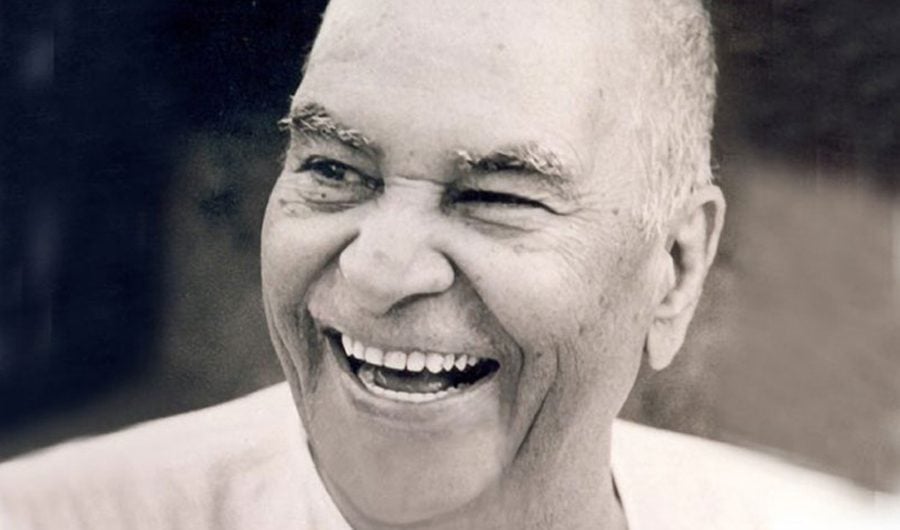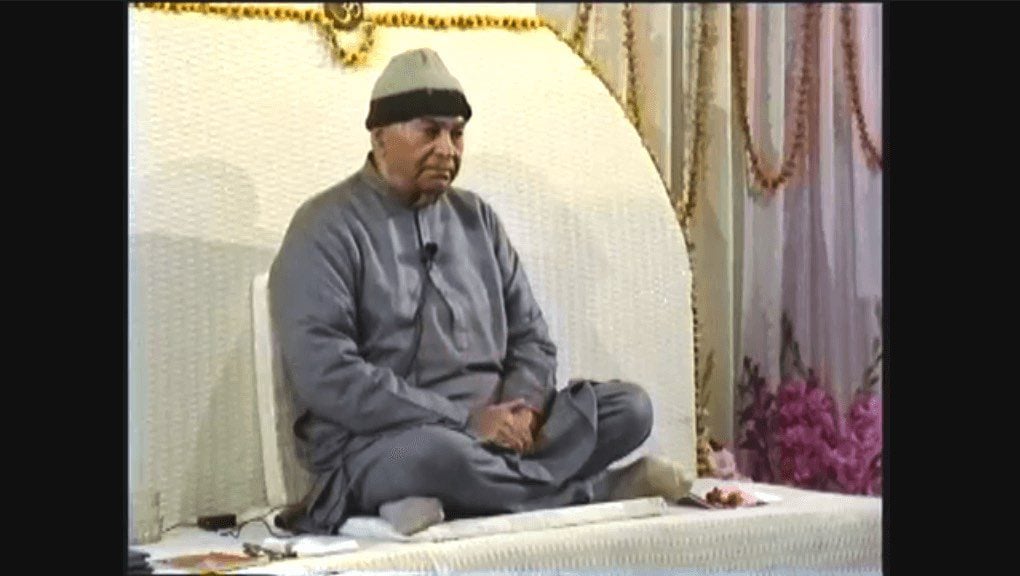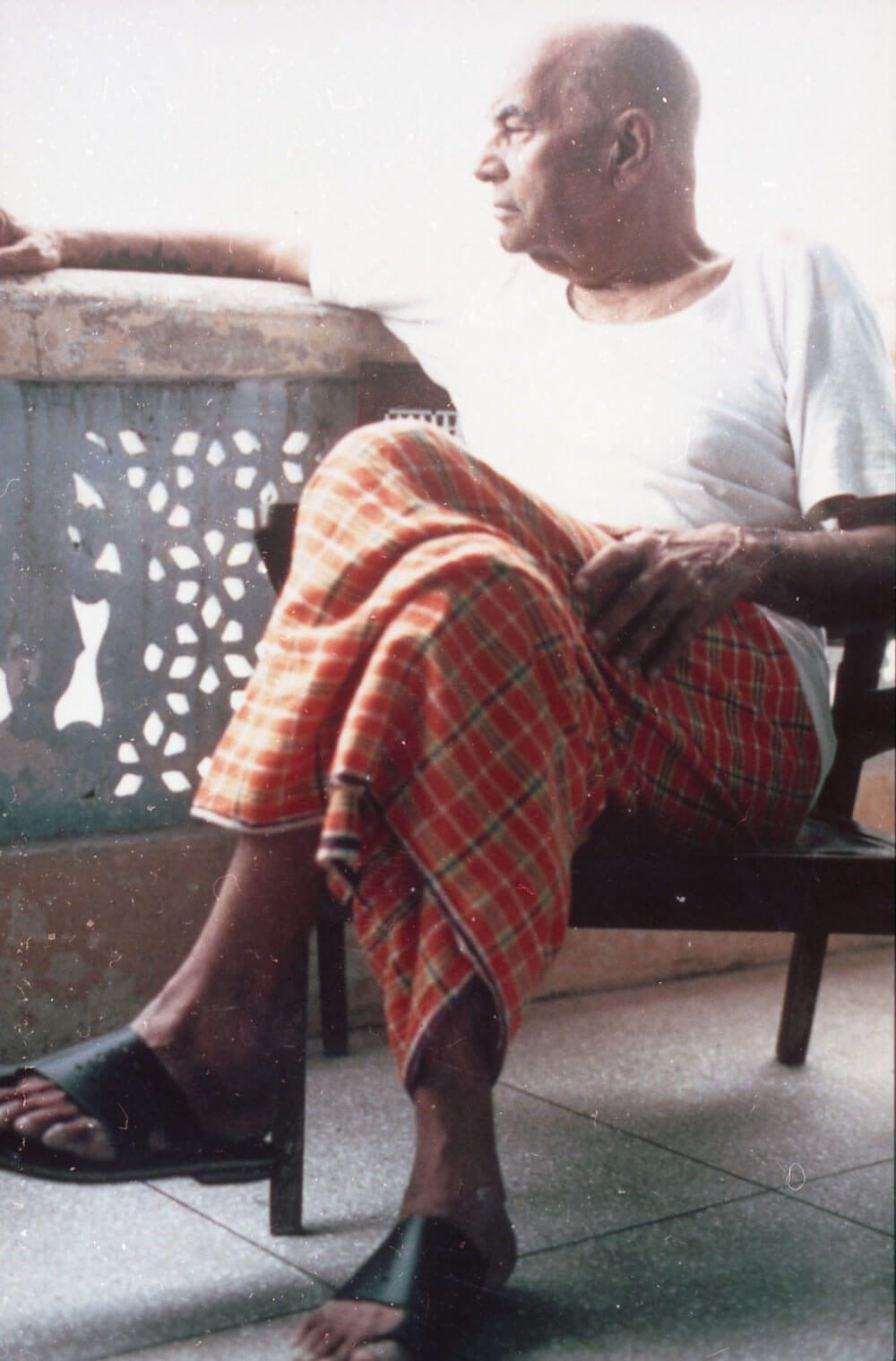
In Papaji’s last days, he fell ill with what was thought to be bronchitis. At a certain point he was taken to the hospital and put on a respirator, yet after a short time his heart also began to fail.
One of Papaji’s closest students tried to question him as to what the procedure should be: should they continue allowing the doctors to work at life support, or should they stop? Instead of answering the question, Papaji somehow rallied out of a semiconscious state, and to the three people in the room gave his last teaching, literally only hours before his body was finished.
He looked at one student and strongly, intensely, and fiercely asked, “Where is the Buddha?”
The student was deeply struck by the question and instantly understood. Papaji saw this, and so he looked to the next and said, “Where is the Buddha?”
At first she replied, “You are the Buddha, Papaji.”
Again, he demanded, “Where is the Buddha!”
Another person brought him a picture of Ramana and said, “Papaji, here is the Buddha.” With the same intensity, Papaji directed his question to each person in the room: “Where is the Buddha!”
He was heavily sedated, and again he slipped into a semiconscious state. His students were still very concerned as to what Papaji’s wishes were for his body. Again they asked him, “Papaji, these doctors have many procedures that they can use to keep your body alive, but we have to know what it is you really want.”
By some miracle of life force, in his severely weakened state Papaji put his arm around a student, grabbed his other hand, and, squeezing it very tightly, said, “Bas.” Bas, in Hindi, means “enough.” Again Papaji said, “Bas.”
The students felt the deep satisfaction of knowing what Papaji wanted, and they all agreed among themselves, but the doctors had their own regulations and so continued to try to keep his body alive.
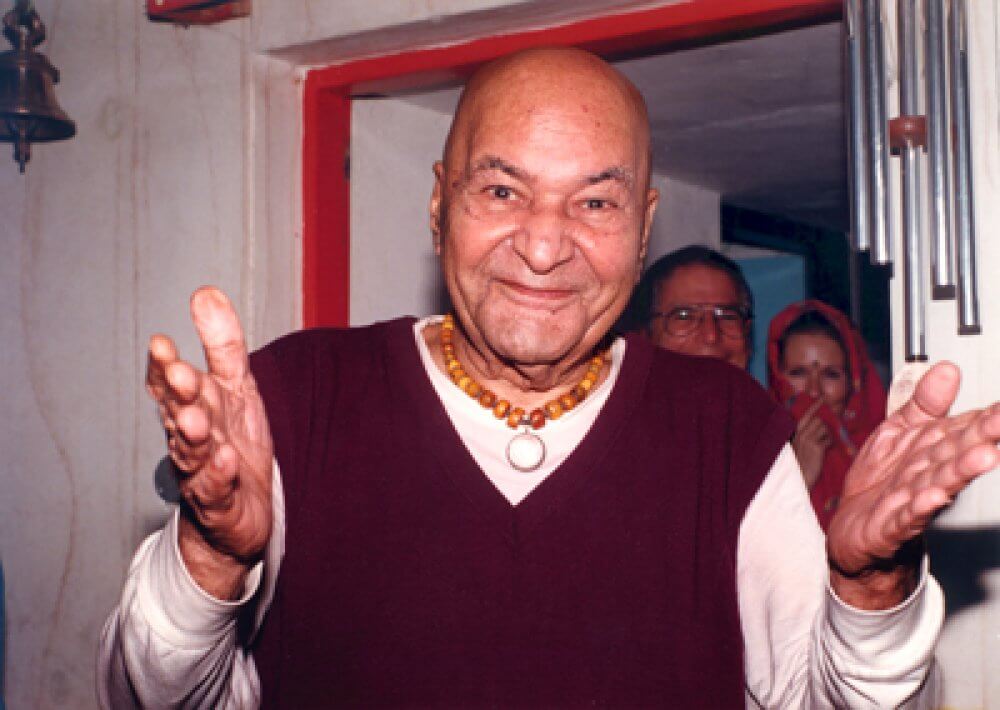
Those closest to Papaji reported that to be in his presence those last days was to be in the presence of pure peace and bliss. There was absolutely no suffering.
As is the Indian tradition, Papaji’s body was burned in one of the burning ghats [funeral grounds] where he resided in the city of Lucknow, Uttar Pradesh. A few days later, his ashes were offered to his beloved river Ganga, in Haridwar, near Rishikesh.
Papaji’s last teaching was also his first teaching. The root of his teaching, throughout all of his time with us, revolved around this type of inquiry: Where is Buddha? Where is awakened mind? You could also substitute the words “peace,”“God,” or “truth.” Where is peace? Where is truth? Where is God? Finally, where is life itself? Where is life to be found?
Where do we look for truth, for God, for ourselves, for life? To receive the answer to these questions, we must first ruthlessly tell the truth about what has been found in those places where we have continued to look. Only then can we inquire of ourselves deeply, honestly, and ruthlessly: Where am I? Who am I?
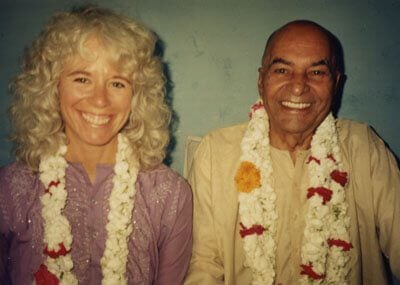
I was profoundly sad at the loss of Papaji’s form, yet I remain exquisitely joyful in the realization that what Papaji is can never be lost. It cannot shift with the dissolution of form. How is it possible that both are included? Because Papaji is life, and everything is included in life. What Papaji’s form always relentlessly pointed to was that which was here before he was born, that which remains after he is gone, and that who he is, is unborn and not subject to death, never separate from who you are, or from anything at all.
The ruthless message of Papaji’s life and Papaji’s death is to face the inevitable ending of all form, including one’s own. It is the invitation to discover for oneself, without a doubt, that the truth of who one is is formless presence of being.
Not the body or the personality, not the thoughts or the emotions, not the personal history, but the discovery of oneself as the living truth of consciousness itself.
Living truth was the strength of Papaji’s being and his living example, as well as his first and final teaching. Even though by all accounts he was paralyzed, some force came through him, and he demanded of those around him, “Where is Buddha?” He would not be satisfied until he saw the awakening and the realization of where Buddha truly is.
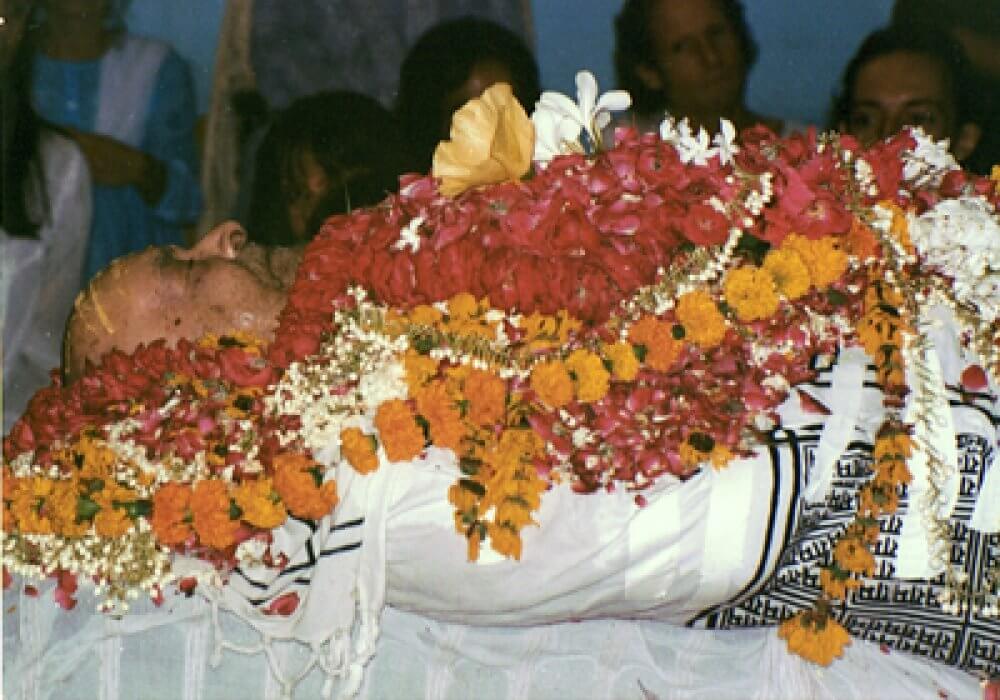
When I first heard of Papaji’s last miraculous rallying, that his last words were a teaching, I was freshly overcome with gratitude for this brilliant force of nature called Papaji.
Someone once asked me what my life was like before I met Papaji, and I said, “Before Papaji, I didn’t have a life; I had a story of suffering. But in the meeting of Papaji, I have only life; I am only life.”
In meeting this huge force that has the potential to stop the suffering of one’s life, there is a recognition of what is alive, the living truth. Not abstractly, not theoretically, not in some hypothetical past or future, but the living truth, as it always exists, alive and present in the core of all being.
Papaji began teaching when he was a young boy. People somehow found their way to him, and he had no idea what he was supposed to say. Yet he taught until his last breath, and always his teaching was pointing us within to what is beyond any idea of inside or outside ourselves.
Papaji’s direct teaching was always to “see the seer.” When this is seen, then wherever you are you will continue the gift that is Papaji.
If you feel a connection to Papaji, from having either met him, or heard about him, or read about him, or even from seeing a picture of him, I encourage you to open your mind as you read this book so that you can recognize what is already alive and present in the core of your own being.
This profound message, from this profound master, that somehow attracts you, is yours already if you will have it. Papaji’s body is gone, but his teaching is alive within each of us. If his teaching pierces your heart open, it will relentlessly reveal your true identity to be life itself.

